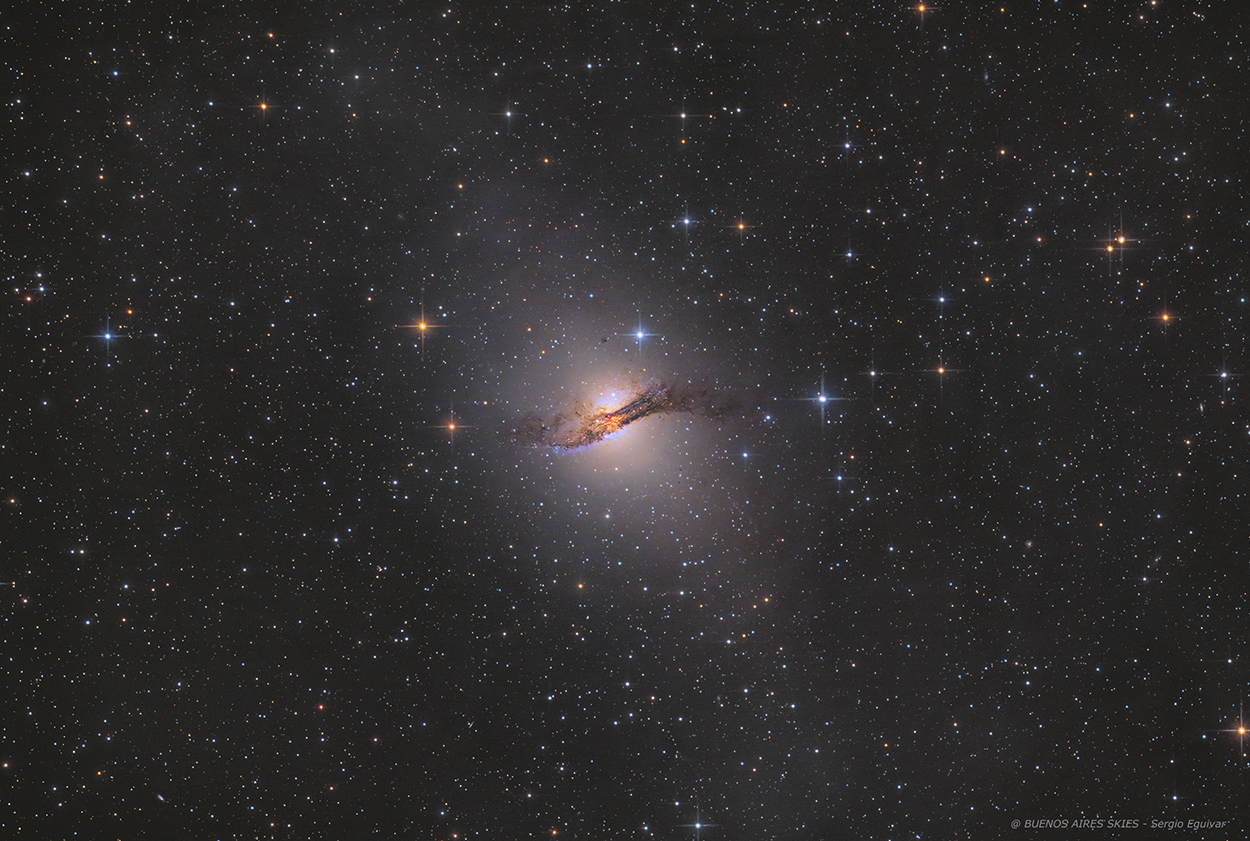
| HOME |
NGC 5128 AKA CENTAURUS A
RADIO GALAXY IN CENTAURUS (THE CENTAUR)
(Image centered at: ra 13 h:26 m / dec - 43º 08')
CLICK THE IMAGE FOR A HIGH RESOLUTION VIEW
March - 2024, Sarandí, Gualeguaychú, Entre Ríos, Argentina
DATA
TYPE: GalaxY
APPARENT DIAMETER: 18.2 arc minutes
APPARENT MAGNITUDE (V): 7
DISTANCE: 12.5 Million light years
IMAGE INFORMATION
INSTRUMENT: 6" ORION OPTICS UK (Ultra Grade Optics) w/Sky Watcher Coma Corrector (0.9x) working at at f4.5
CAMERA: QHY 183 MONO
MOUNT: VIXEN GDPX, OAG with Starlight Xpress Lodestar
FILTERS: BAADER LRGB Set
SKY CONDITIONS: rural skies - Bortle 4 - SQM 20.63
EXPOSURES: LRGB (120,45,45,45)
OBJECT DESCRIPTION AND IMAGE SESSION
Centaurus A (also known as NGC 5128 or Caldwell 77) is a galaxy in the constellation of Centaurus. It was discovered in 1826 by Scottish astronomer James Dunlop from his home in Parramatta, in New South Wales, Australia. There is considerable debate in the literature regarding the galaxy's fundamental properties such as its Hubble type (lenticular galaxy or a giant elliptical galaxy) and distance (11–13 million light-years). It is the closest radio galaxy to Earth, as well as the closest BL Lac object (a type of Active Galactic Nucleolus), so its nucleus has been extensively studied by professional astronomers.The galaxy is also the fifth-brightest in the sky, making it an ideal amateur astronomy target. It is only visible from the southern hemisphere and low northern latitudes.
The center of the galaxy contains a super massive black hole with a mass equivalent to 55 million solar masses,which ejects a relativistic jet that is responsible for emissions in the X-ray and radio wavelengths.
NGC 5128 is also one of the nearest large starburst galaxies, of which a galactic collision is suspected to be responsible for an intense burst of star formation. Models have suggested that Centaurus A was a large elliptical galaxy that collided with a smaller spiral galaxy, with which it will eventually merge. For that reason, the galaxy has been of particular interest to astronomers for years. While collisions of spiral galaxies are relatively common, the effects of a collision between an elliptical and a spiral galaxy are not fully understood.
NGC 5128
RADIO GALAXY IN CENTAURUS
ANNOTATED IMAGE 100% RESOLUTION